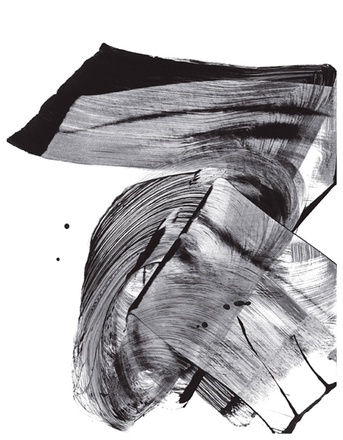K.O. Götz
Siekri 12 (2014)
The painter Karl Otto Götz, who was born in 1914, is rightly regarded as a major protagonist of the difficult history of modern and contemporary art in Germany. Banned from painting during the Nazi era for his abstract technique, he became a member of the artist’s group CoBrA after World War II; with other painters of his generation who created what is known as Art Informel, he redefined the role of the gestural register in painting.
Their studies, which exerted a major influence on the art of the twentieth century, echoes in “Siekri 12”, Götz’s edition for "Texte zur Kunst". The work, reproduced as a Ditone print, is based on a gouache; in its visual rhetoric of wiping and condensed development of edges, it exhibits the work of the brush as a choreography of movement, stoppage, changes of direction, and resumption of the gesture. It never lapses into expressiveness; its primary source of inspiration, suggested also by the palette of dark hues on a paper-colored ground, is calligraphy. But where the latter is linear, Götz builds a broad and flatly expansive ensemble, a diaphanous composition whose layers – like superimposed lengths of gauze – seem to enfold spatial depth as well.
K.O. Götz, "Siekri 12", 2014, Ditone print, 65 x 50 cm, Edition: 100 + 20 A.P., numbered and signed on the front, € 550.- plus shipping.

